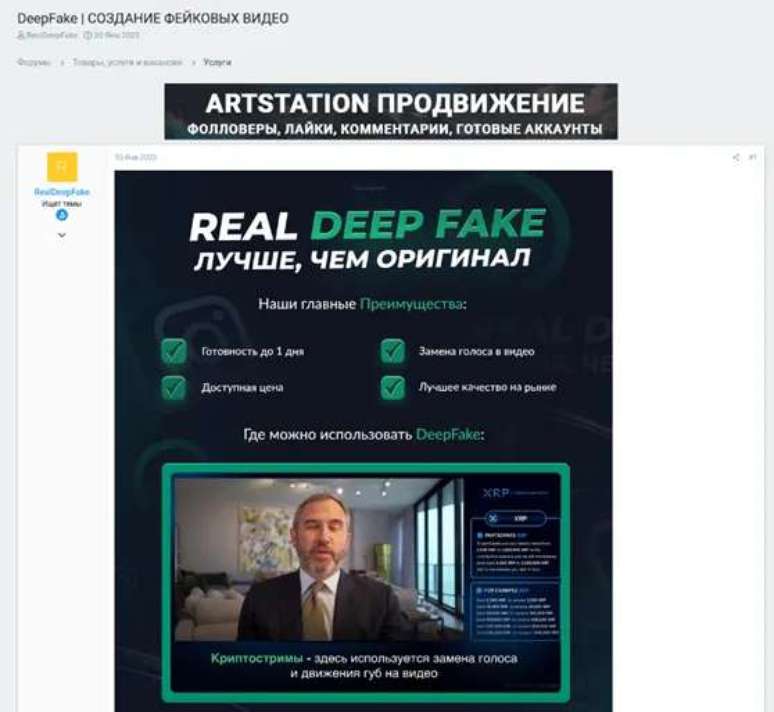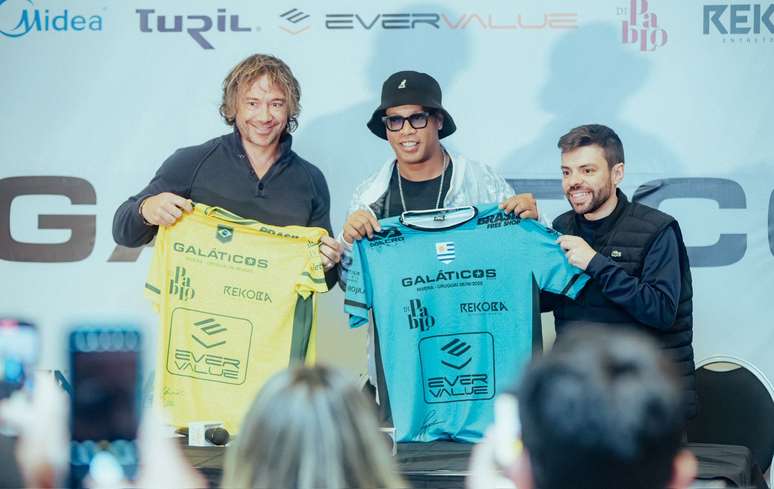Criminals sell the production of deep fakes on the dark web, with values growing based on the complexity and usefulness of the fake videos
Like so many other criminal activities, the deep fake it has also become a valuable bargaining chip on the dark markets of the dark web. In these spaces, the bandits make their editing and artificial intelligence skills available to customers to produce fake videos, with values that can reach up to R$ 100,000 per minute in the most complex and relevant cases.
- Top 10 Most Astounding Deepfakes That Confused The Internet
- AI and deepfakes pose a new risk to online relationships, according to a study
The amount appears in a report from the cybersecurity company kaspersky, who analyzed the functioning of these markets. According to specialists, there is an increasing interest and also the offer of services of this type for the most diverse purposes, involving not only video, but also audio and photos generated by artificial intelligence.
Prices vary depending on the purpose, which can range from simple spoofed pornographic videos to defame someone to large scam schemes to steal personal data and money, not to mention political manipulation. Still on this scale, values can start from US$ 300, just under R$ 1,500 for a complete “production”, up to US$ 20,000 per minute, the already mentioned R$ 100,000 in direct conversion, for longer clips. to elaborate.

“A more careful scam will achieve a huge success rate, translated into victims. This justifies the growing demand for these services on the dark web,” said Fabio Assolini, director of Kaspersky’s global research and analysis team for Latin America. He also indicates that technology continues to evolve, which could lead to an increase in the quality of fakes and a possible decrease in prices due to disclosure.
The expert also cites data from a survey by the same security firm, who revealed in July last year that over 65% of Brazilians do not know what deep fake is, much less to differentiate a fake video from the real one. This entire universe of people is now susceptible to increasingly elaborate frauds through technology that continues to advance.
Keeping an eye on cryptocurrencies
According to Kaspersky’s survey, the main pattern prevalent in cybercriminal markets is the use of deep fakes in “cryptostreams”. These fraudulent lives, made by channels on the Youtube stolen in malware attacks, take advantage of the appearance of celebrities and large companies to promote cryptocurrency fraud, promising huge financial returns.

Instead of using pre-recorded videos or past lives, however, deep fakes allow for the creation of “unedited” videos that can give the heist a greater appearance of legitimacy. However, the offer is always the same, with the user invited to participate in a large delivery of cryptocurrencies on behalf of a famous person in the sector, with the sending of small sums with the consequent return of large sums.
That doesn’t work, of course, with Kaspersky talking about losses to victims that can range from $1,000 to $460,000, or R$5,000 to R$2.2 million. This is a lucrative market, which in addition to the sale of videos, also includes the sale of prefabricated sites for the application of scams and orange wallets to spread the money received.
How to identify a deep fake and avoid scams?
While some of the productions created with the technology can be convincing enough, the other end of the schemes isn’t always. Therefore, in the case of cryptostreams, for example, the ideal is to follow the maxim: if an offer is too good to be true, it’s probably a lie.
Search social networks and official websites of companies and celebrities to verify that the offers made in the alleged live stream are real. In general, be wary of alleged investment schemes that offer “multiplication of earnings” by sending small sums, and avoid passing data or values to systems of this type.
Fix it again if the video looks ‘strange’ or if the person shown has erratic or unnatural movements. Sudden changes in lighting, no winking, or lips out of sync with speech are also elements that help pick up on a deep fake, with files usually intentionally rendered in low quality, as a way to hide those aspects.
The research advice, by the way, is also valid for validating the information seen in videos of this type. A quick search on reputable news sites may confirm (or not) that someone in the public said the barbarism that was shared en masse on WhatsApp; the ideal is not to let these videos pass, to reduce their reach.
Trending on Canaltech:
- GM to Stop Production of Onix in June; see why
- Volkswagen embraces the idea of the people’s car and gives an extra “discount”.
- Popular car | What will the prices of the 10 cheapest cars be like in Brazil?
- Ford Ranger 2024 | Let’s take a close look inside the new pickup
- 5 reasons not to buy Chevrolet Tracker RS
- Robot imagines a scenario where artificial intelligence manipulates humans
Source: Terra
Rose James is a Gossipify movie and series reviewer known for her in-depth analysis and unique perspective on the latest releases. With a background in film studies, she provides engaging and informative reviews, and keeps readers up to date with industry trends and emerging talents.






